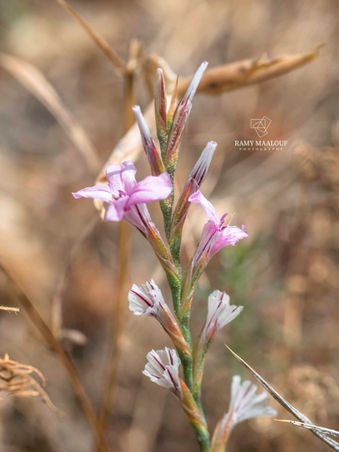Family |
Plumbaginaceae
Acantholimon antilibanoticum
Mouterde
Leb. Syr.
Acantholimon antilibanoticum Mouterde
(Nouvelle Flore du Liban et de la Syrie, vol. 3, Pl. VI nº 2; 1973)
Life‑form & habit — Spiny cushion sub‑shrub, 10–15 cm high (sometimes taller), its surface densely dusted with whitish calcareous dots; branches elongated and tightly packed into a low dome.
Leaves — Rigid, narrowly linear (2) 3–4 (5) cm long × ≈ 1 mm wide, glabrous, grooved on the lower face; tips long‑attenuate and sharply pungent; leaves erect or, more often, spreading to reflex‑spreading.
Scapes — Flowering stems do not exceed the leaves; each bears one or two membranous, acuminate scales.
Inflorescence — Simple, straight spike with 7–10 spikelets; rachis not flexuous.
Bracts — Conspicuously scarious‑margined, slightly undulate, acuminate and striate; tinged brown‑red near the tip. The lowermost bract, ovate‑triangular and long‑acuminate, is about as long as the others.
Calyx — Tube 10‑ribbed, glabrous, longer than the limb; limb shallowly 10‑lobed, traversed by five nerves that reach—but do not exceed—the margin.
Corolla — Rose‑pink, apparently a little shorter than the calyx.
Flowering period — Summer (June–August).
Habitat & elevation — High‑mountain limestone or dolomitic slopes of the Anti‑Lebanon and Mount Lebanon ranges.
distribution in Lebanon — Recorded from Jabal Rheimoun above Tannourine, Ouadi Ibrissa, Jbab‑el‑Homr to Marj Hin, the middle zone of Jabal Hermon, and high ridges above Bloudane, Madaya and Maʿloula.
Native range — Endemic to Lebanon and the Anti‑Lebanon mountains of Syria.

